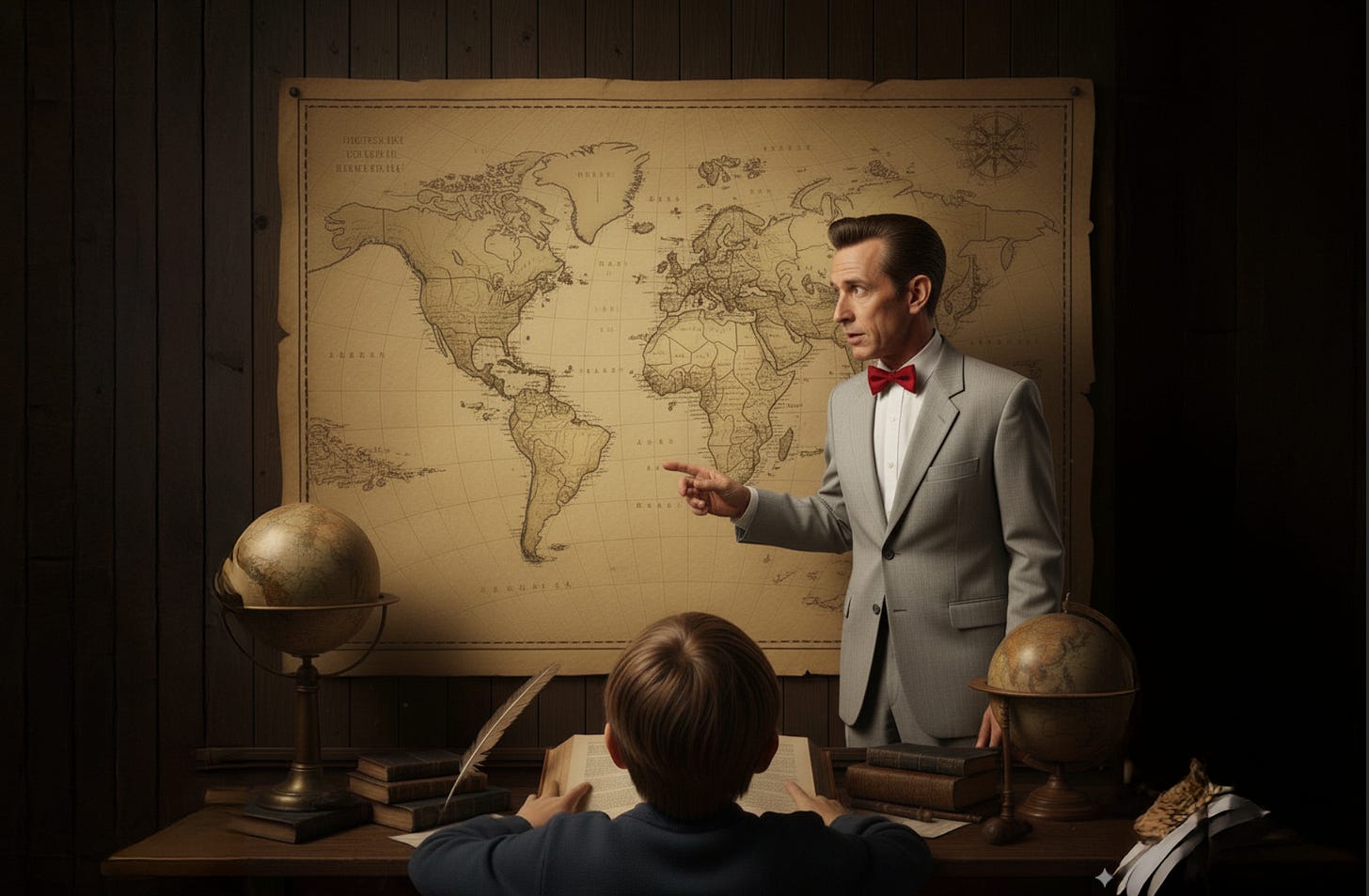The Map That Wouldn’t Sit Still
How a fourth-grade lesson revealed the world was still under construction.
I’ve told the story of the map before, the way an adult would tell it: straight lines, neat borders, a tidy revelation. But lately, the map has been slipping back into my life. I see it in the folds of receipts, in the cracks of sidewalks, in the grain of my own desk. The continents still shift when no one is looking. Whole neighborhoods flicker in and out. I tried once to tell the sensible version. This is the one the map keeps insisting on.When I was in the fourth grade, our teacher, Mr. Polk, rolled down a map of the world that looked like somebody had flattened a tangerine peel and nailed it to the wall. I had always assumed the world went on forever, like the cereal aisle or my father’s arguments. But here it was, shrunken to the size of a tablecloth, with oceans that could be crossed in a few steps and countries that fit inside your lunchbox.
The shock was considerable. For days, I wandered around with the uneasy feeling that I had been duped. If the Earth could be stretched flat, what else would be? Were mountains just wrinkles? Was my own neighborhood penciled in at the last minute by a weary cartographer who had run out of blue ink?
Mr. Polk did not help matters. He wore his hair in a combover, donned a suit that resembled Pee Wee Herman’s hand-me-downs, and spoke as if he had been hired to finish sentences quickly, before somebody changed their mind. When I asked why Lebanon—the place from which my family had emigrated—kept slipping down near the bottom edge of the map, he said it was a projection issue and moved on to crop rotations. I suspected he meant that both Lebanon and I were provisional.
It soon dawned on me that the world wasn’t finished. Adults, who always pretended otherwise, were living in a half-built subdivision of reality. The suburbs were still being hammered together, wars were marked “under construction,” and my own city had that look of a neighborhood where the contractors had taken lunch and never returned.
Children know these things better than adults. They recognize the scaffolding under the wallpaper, the places where the ceiling leaks into your cereal. I became convinced that each night, while we slept, surveyors came out to redraw borders, extend highways, and erase inconvenient villages. Sometimes they forgot to erase the people.
This is why the map in Mr. Polk’s room kept shifting when I looked at it. Greenland swelled like an unruly balloon, appearing much larger than I later discovered it was. Africa shrank like a shirt left in the dryer, mistakenly giving me the notion that it was much, much smaller than it actually was, and Detroit, where I was supposed to be from, flickered faintly at the edge of a fold. At the time, I did not mention this to anyone, because it was the kind of thing adults already knew, but more importantly, had chosen to ignore.
Now, of course, I understand that the world still isn’t finished. Every morning, the newspapers announce that some new part has been added, or an old part subtracted, and the mapmakers have once again given up trying to keep up. But the shock I felt that day has never quite worn off. It is the same feeling I get when I discover that an old friend has vanished from the phone book, or when my country suddenly turns out to be located somewhere else entirely.
If you don’t believe me, try this: look out your window right now. Then look at the map. If the two don’t quite match, don’t blame your eyesight. The world is still under construction. Always has been.

